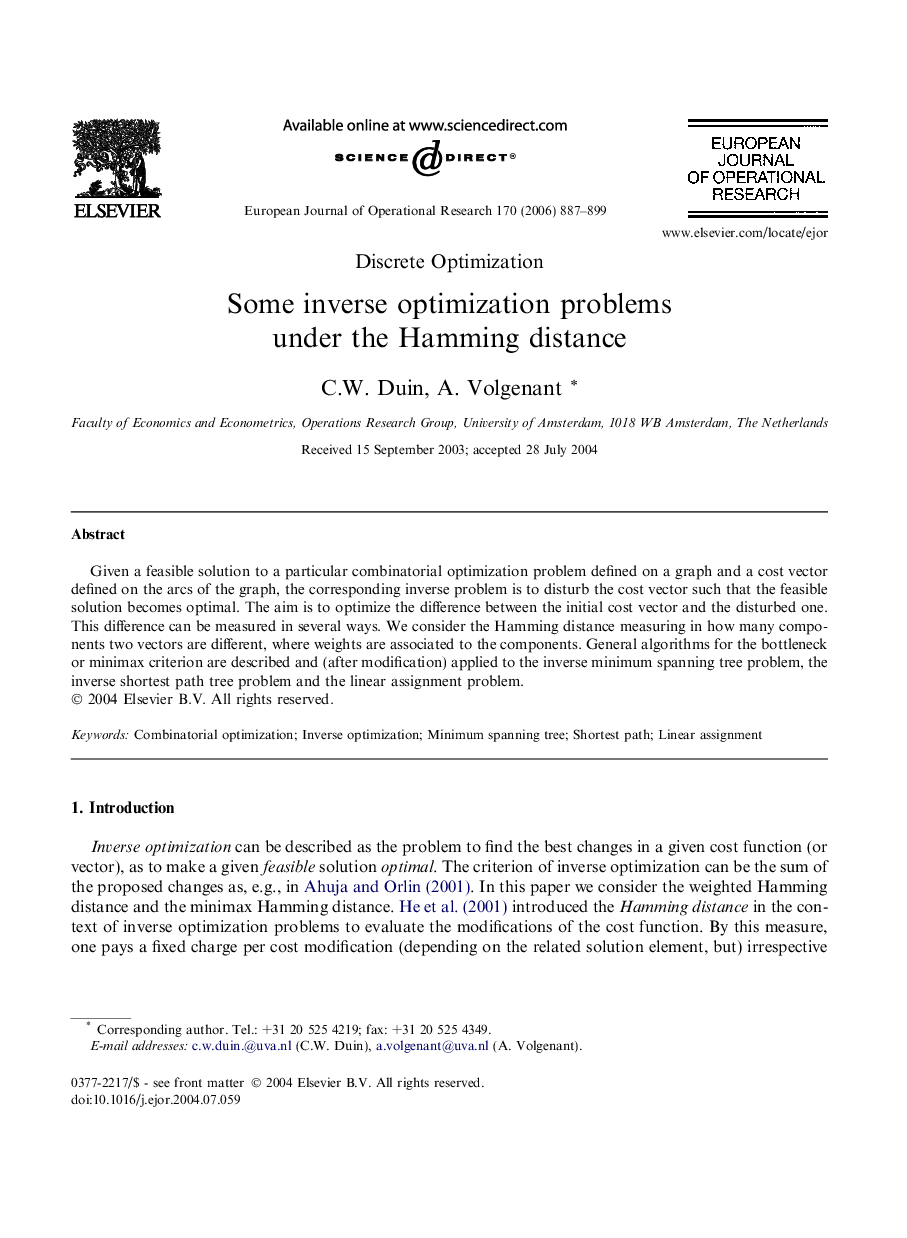| Article ID | Journal | Published Year | Pages | File Type |
|---|---|---|---|---|
| 482936 | European Journal of Operational Research | 2006 | 13 Pages |
Given a feasible solution to a particular combinatorial optimization problem defined on a graph and a cost vector defined on the arcs of the graph, the corresponding inverse problem is to disturb the cost vector such that the feasible solution becomes optimal. The aim is to optimize the difference between the initial cost vector and the disturbed one. This difference can be measured in several ways. We consider the Hamming distance measuring in how many components two vectors are different, where weights are associated to the components. General algorithms for the bottleneck or minimax criterion are described and (after modification) applied to the inverse minimum spanning tree problem, the inverse shortest path tree problem and the linear assignment problem.
